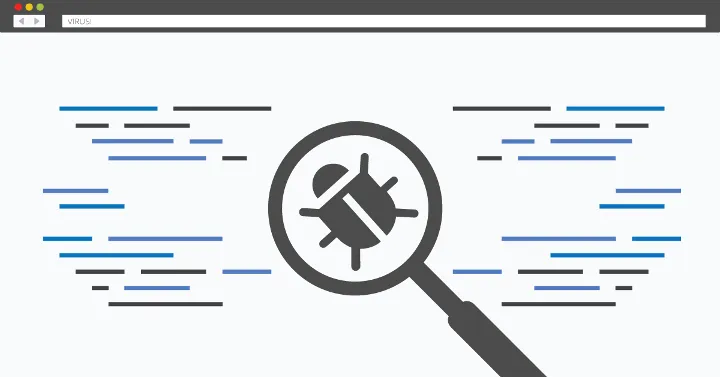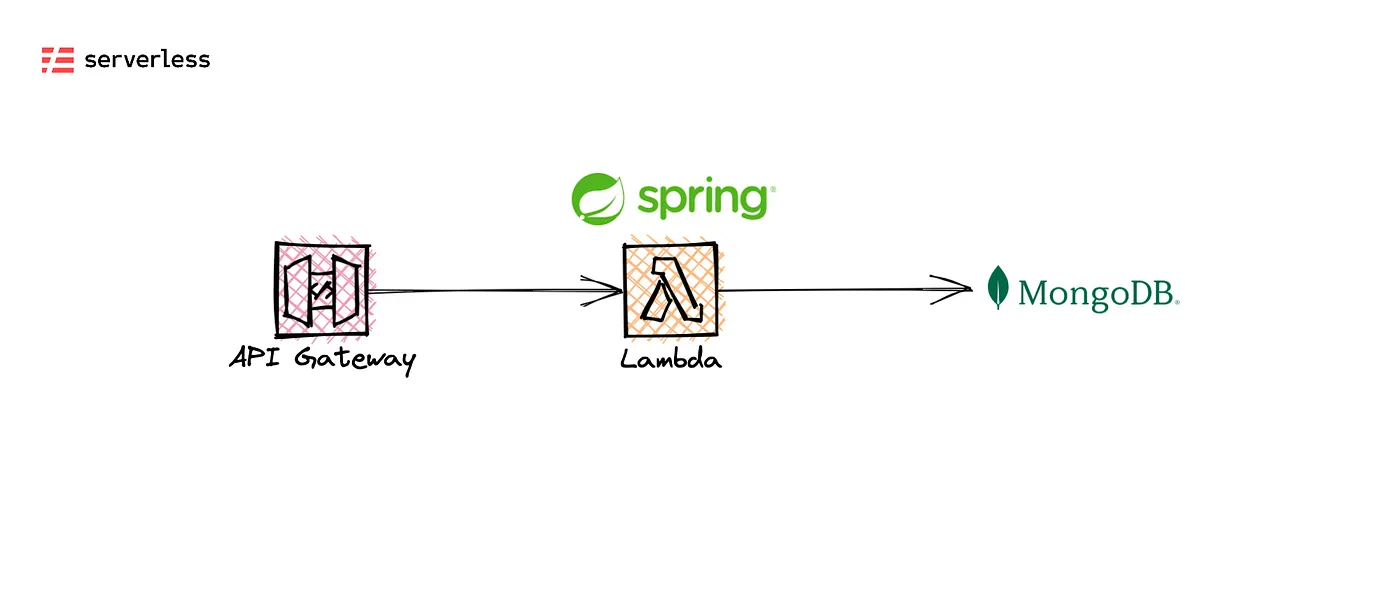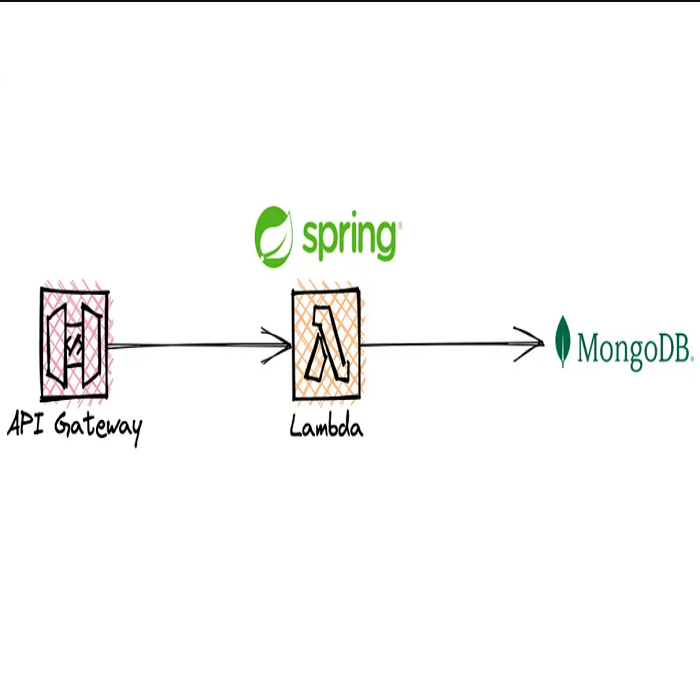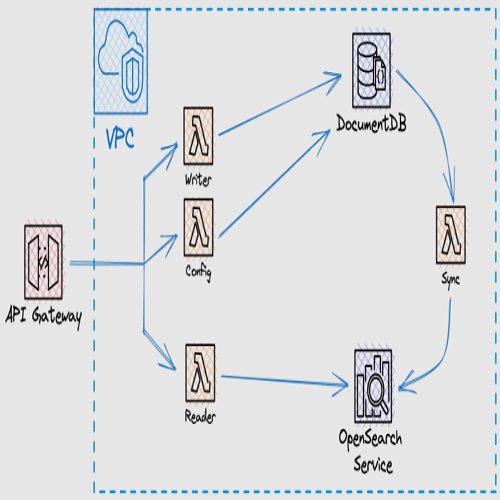Welcome to the world of software testing! In today’s digital landscape, delivering high-quality software products is crucial. That’s where a well-defined test strategy comes in.
This article will explore the key components of a successful test strategy and how it contributes to software quality.
We’ll discuss setting clear objectives, selecting appropriate techniques, and the importance of collaboration and automation. Get ready to enhance your testing efforts and unlock the full potential of your software development. Let’s dive in!
Definition of a test strategy
Test Strategy is a high-level document that outlines the approach and objectives for testing a software application as part of the software system. It provides an overall framework for the testing process and guides testing activities throughout the project lifecycle.
The Test Strategy document clearly defines the exact scope of testing, test objectives, test techniques and test tools, test environments, release process, and the overall schedule and resources allocated for testing.
The best practice is to create a strategy during the project’s early stages. It is a static document, and that should be kept in mind — only some changes are allowed once the document is approved and agreed upon. It is usually prepared by Project Manager, Project Architect, Test Manager, Dev, and Test Lead.
1. Key points about document creation
Responsibilities regarding document creation, review, and approval
Responsibilities regarding the test strategy document creation, review, and approval involve collaborative efforts among the Test Manager, Product Owner, Dev Lead, and Test Lead.
The Test Manager initiates the document creation, working with stakeholders to define testing objectives, scope, and approach. They review and approve the document to ensure its accuracy and alignment with project goals. The Product Owner provides insights into business requirements and reviews the document to ensure it addresses functional and non-functional needs. The Dev Lead reviews it from a technical perspective, considering development approaches and potential risks. The Test Lead contributes by defining the testing scope and priorities and reviewing the document to ensure clear guidelines for planning and test execution.
What can be found inside the document?
The test strategy document holds a comprehensive overview of the approach and methodologies that will be employed during testing activities. It outlines the overall strategy and guidelines that will govern the testing process and help ensure the delivery of a high-quality product.
Here are the key components typically found in the Test Strategy document:
- Test objectives and scope of the project
- Test approach
- Test environment and data
- Testing tools and reporting
- Release control
- Risk analysis
- Automation strategy
By documenting these aspects, the test strategy document serves as a guideline for the testing team, ensuring a structured and systematic approach to testing while addressing key considerations and risks that may arise during the process.
2. Test approach
Roles and responsibilities
When writing about roles and responsibilities in a test strategy document, it is important to clearly define the different roles involved in the testing process and outline their respective responsibilities.
Here’s an extensive description of the roles commonly found in software testing:
- Test Analyst
- Automation Test Engineer
- Performance Test Engineer
- Stakeholders
- Test Lead
- Test Manager
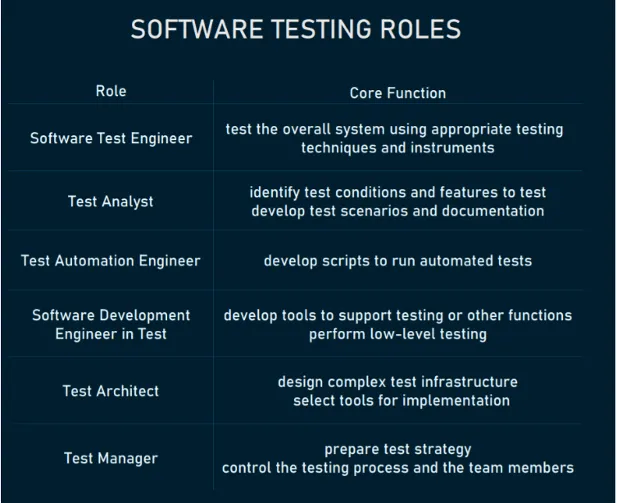
Process of testing
The process of testing refers to the systematic and structured approach taken to verify and validate software or a system to ensure that it meets the specified requirements and performs as intended. It encompasses a series of activities, tasks, and steps that are carried out to identify defects, errors, or deviations from expected behavior in the software under test.
The testing process involves various stages, including test planning, test design, test execution, and test closure. Each stage has its own objectives, activities, and deliverables. The process typically starts with understanding the testing objectives and scope, then designing test cases, executing them, and analyzing the results.
The main goals of the testing process are to ensure the software’s quality, reliability, and functionality, as well as to identify and report any issues or defects that need to be addressed. It involves evaluating the software against specified criteria, such as functional requirements, performance expectations, usability guidelines, and security standards.
The testing process is iterative and collaborative, involving collaboration between testers, developers, business analysts, and other stakeholders.

Testing levels
In software testing, different levels of testing are performed to ensure the quality and reliability of the software system. Each testing level focuses on specific aspects of the system and is designed to uncover different types of defects.
Here are the commonly recognized testing levels:
- Unit testing
- Integration testing
- System testing
- Regression testing
- Acceptance testing
Performance testing
- Performance testing evaluates the system’s performance, scalability, and responsiveness under different workloads and stress conditions.
- It helps identify performance bottlenecks and determines if the system meets the performance requirements.
- Performance testing includes load, stress, endurance, and scalability testing.
Security testing
- Security testing focuses on assessing the system’s security measures and vulnerabilities.
- It helps identify potential security risks, such as unauthorized access, data breaches, or vulnerabilities in the software.
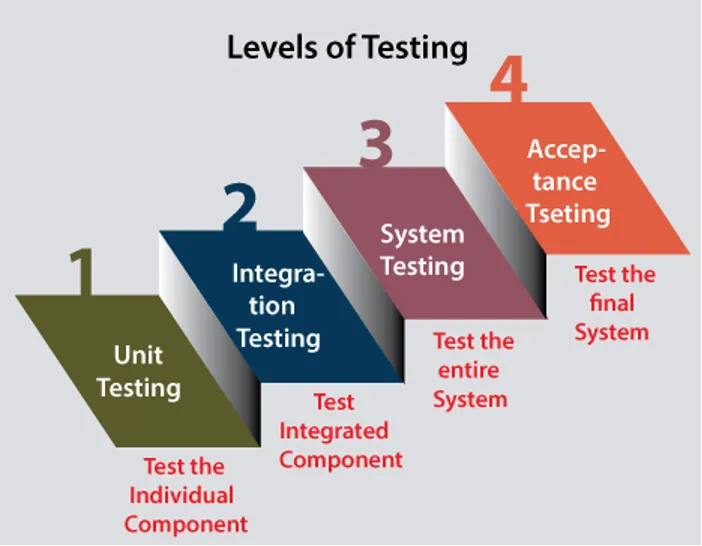
Types of testing
Under the “Types of Testing” section in the test strategy document, you can include a comprehensive list of the different types of testing that will be performed as part of the overall testing approach.
Common types of testing that you may consider including:
- Compatibility testing
- Functional testing
- Exploratory testing
- Smoke testing
- Acceptance testing
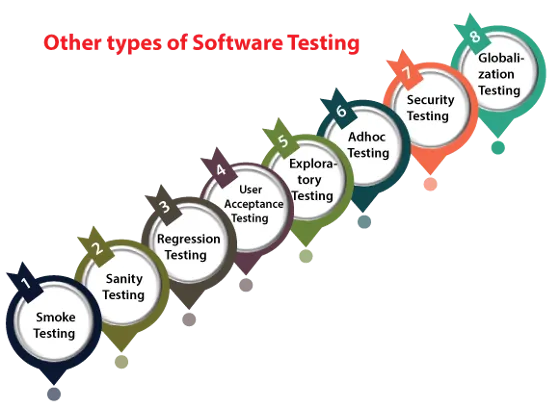
Testing approach
There are two main testing approaches in software testing: proactive and reactive.
Proactive testing
Proactive testing, also known as preventive testing or validation testing, is a testing approach that focuses on identifying and preventing defects early in the software development lifecycle. The primary goal of proactive testing is to ensure that defects are minimized or eliminated before they impact the final product. Key aspects of proactive testing include:
- Requirements analysis
- Reviews and inspections
- Test planning
- Test design techniques
- Test automation
Reactive testing
Reactive testing, also known as defect detection testing or corrective testing, is a testing approach that focuses on identifying and fixing defects found in the software after its development. The primary goal of reactive testing is to catch and correct defects that were not identified during proactive testing. Key aspects of reactive testing include:
- Defect reporting and tracking
- Defect prioritization and resolution
- Root cause analysis
- Continuous improvement
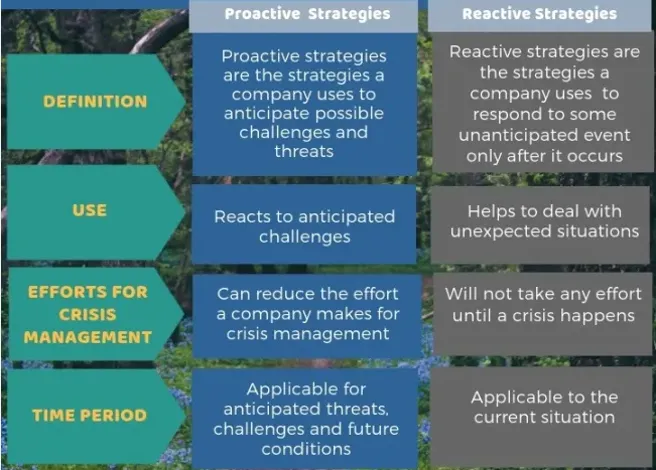
Regression testing
Regression testing is a comprehensive testing process that ensures that modifications or updates to a software system do not introduce new defects or negatively impact existing functionality. It involves retesting previously validated areas of the software to identify any regressions caused by changes.
1. Scope and test suite selection
- Regression testing typically focuses on the areas of the software that are affected by changes. This includes modified code, related modules, dependent components, and any associated functionality.
- The selection of test cases for regression testing is crucial. It involves identifying and prioritizing test cases that cover the affected areas and any interconnected functionalities.
2. Test prioritization and coverage
- Test cases for regression testing are prioritized based on their impact and criticality. High-priority test cases cover critical functionalities or areas prone to regression, while low-priority cases cover less critical or less impacted areas.
- Priority is assigned based on factors such as business impact, frequency of use, customer expectations, and the likelihood of defects being introduced.
3. Test execution
- Regression tests can be executed manually or automated, depending on the complexity and volume of the test suite.
- Manual regression testing involves running the selected test cases step-by-step to validate the system’s behavior after the changes.
- Automated regression testing involves using test automation frameworks and tools to execute the regression test suite efficiently.
4. Defect reporting and tracking
- During regression testing, if any defects or regressions are identified, they are reported to the development team for resolution.
- The defects are documented with detailed information, including steps to reproduce, expected behavior, actual behavior, and any supporting data. The development team addresses the reported issues and resolves them to maintain the stability and functionality of the software.
5. Test suite maintenance
- Regression test suites need to be regularly maintained to accommodate changes, updates, and new functionality.
- As the software evolves, new test cases may need to be added, and existing test cases may need to be updated or removed to be up to date with the latest state.
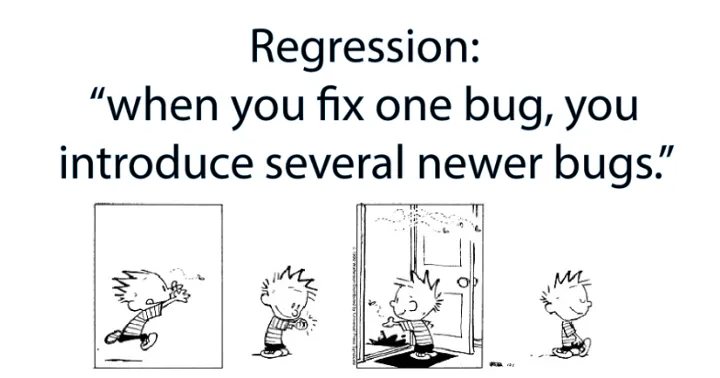
Release control
In Agile software development, the Release Control Process and release lifecycle play a crucial role in managing the delivery of software releases, including UAT (User Acceptance Testing) and production releases. These processes ensure that software updates are released controlled and efficiently while also incorporating testing activities.
Here’s an explanation of the Release Control Process in the context of Agile development, specifically in Scrum work, and their relation to testing and test strategy:
1. Release planning: The Product Owner collaborates with the Scrum team to define the release’s content and objectives, including prioritizing user stories and defining the scope of the release.
2. Sprint planning: Once the release plan is established, the Scrum team conducts sprint planning. During this process, the team identifies which user stories and features will be included in each sprint, considering the priorities set during release planning.
3. Sprint execution: The Scrum team works on implementing and testing the prioritized user stories within each sprint. Development and testing activities are closely integrated during this phase.
4. Sprint review and retrospective: At the end of each sprint, a sprint review is conducted to showcase the completed features to stakeholders, including the Product Owner and development team. Feedback from stakeholders is gathered, and necessary adjustments are made to the product backlog. The development team also conducts a retrospective to reflect on their processes and identify areas for improvement.
5. UAT release: Once a sprint or a set of sprints is considered potentially shippable, the software is deployed to the UAT environment for testing by end-users or stakeholders. The UAT participants execute predefined test cases and provide feedback on the software’s functionality, usability, and overall acceptance.
6. Production release: After successful completion of UAT and addressing any issues identified during the testing phase, the software is deemed ready for production release and the release is planned and coordinated to ensure minimal disruption to end-users.
Release control and test strategy
In the context of release control, a clear and defined test strategy is crucial for the release control process in Agile software development. It provides a structured approach to ensure comprehensive testing coverage throughout the release lifecycle.
Also, a clear test strategy ensures effective communication and collaboration among the development team, testing team, product owner, and stakeholders.
To conclude, a clear and well-defined test strategy document is essential for the Release Control process as it provides structure, guidance, and a common understanding of testing activities and making the product shippable.
3. Test environment and test data
Test environments refer to the dedicated environments where testing activities take place during the software development lifecycle. The goal of these environments is to closely resemble the production environment and provide a controlled space for testing various aspects of the software.
Test environments are typically set up with the necessary hardware, software, and network configurations to simulate real-world scenarios. They allow testers to execute different types of tests, including unit testing, integration testing, system testing, and user acceptance testing while ensuring that the software operates as expected and remains stable.
Best practices for test environments
Test environments should be isolated from each other completely. They should run on independent instances. There should be environments dedicated to development, testing, pre-production, and production environment. The goal should be that these environments are close to each other regarding computing power, scalability, and DB size.
Dev and Test environments should be used for development team, Pre-production for user acceptance testing, and Production is the environment for commercial users of the application.
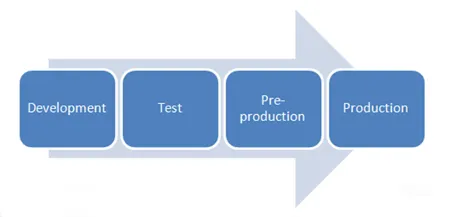
Deployment policy should be introduced in all environments. for example, on DEV — builds from the feature branch can be deployed, on Test only ‘development’ branch can be deployed and on UAT and Production only Release and Master branches can be deployed.
Test data
Test data refers to the information or datasets used for conducting testing activities. It includes input data for executing tests, expected output data for verification, and created (generated) data. Test data should be carefully selected and designed to cover a wide range of scenarios, including valid and invalid inputs, boundary cases, and edge cases. It helps ensure the software behaves correctly and effectively handles various data conditions.
4. Test automation and testing tools
Test automation best practices
Test automation is an essential component of modern software testing. It involves using automated tools and frameworks to execute tests, verify expected outcomes, and compare actual results against desired results.
The following components outline the test automation strategy:
- Technology stack
- Rest assured
- Scheduled nightly runs
- Reporting
- Merge request review and branching rules
- Code quality rules — SonarQube
Common testing tools
In addition to the test automation requirements and setup, the following tools are commonly used for software testing:
- Postman
- PostgreSQL
- IntelliJ IDEA
- Rancher Desktop
- Notepad++
5. Review and approvals
Review and approvals are important steps in the creation and implementation of a test strategy document. These processes ensure that the document is accurate, comprehensive, and aligned with the project’s goals and requirements.
Review
During the review process, the test strategy document is carefully examined by relevant stakeholders, such as the project manager, testing team, development team, and other key stakeholders. The review aims to validate the content, identify any gaps or inconsistencies, and provide feedback to improve the document. Reviewers assess the document’s completeness, clarity, and alignment with project objectives and industry standards.
The key activities in the review process may include:
1. Content evaluation
2. Consistency check
3. Compliance verification
Approvals
Once the review process is completed, the test strategy document undergoes the approval stage. Approval is typically given by project stakeholders who can validate and authorize the document. These stakeholders may include the project manager, testing manager, development manager, and other senior members.
The approval process involves:
4. Evaluation
5. Authorization
6. Distribution
Conclusion
A well-defined and carefully executed test strategy is the cornerstone of successful software development, by outlining clear objectives, identifying the proper test techniques and tools, and ensuring effective communication among stakeholders.
However, it’s important to remember that a test strategy is not a static document. It should evolve alongside the software development lifecycle, adapting to changing requirements, technologies, and market demands. Regular reviews and updates are essential to address emerging risks, incorporate new testing methodologies, and leverage advancements in automation.
Through our journey in Levi9 IT and multiple projects behind us, we learned how valuable a test strategy is and how it can improve the final product. We also aim to transfer our knowledge to new colleagues — not only how to write and maintain the document properly but also what its benefits are.
